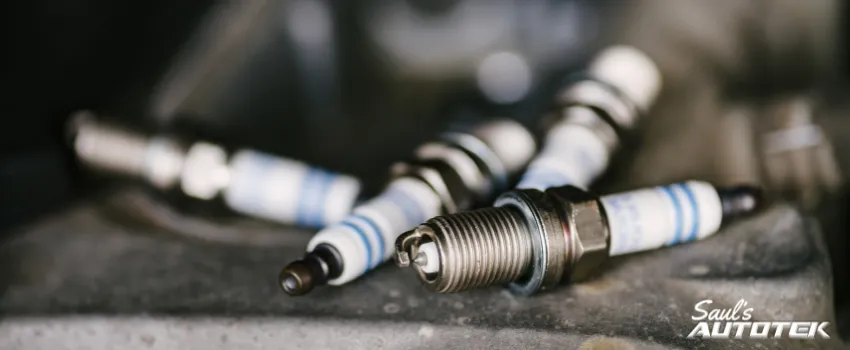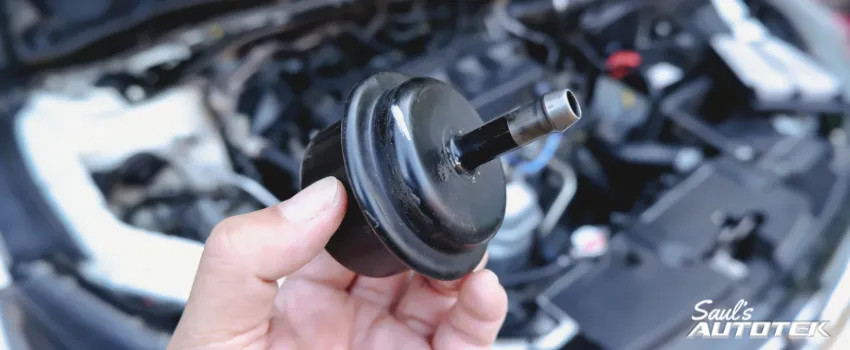Good morning. I’m Saul Reisman, here at Saul’s AUTOTEK, and today we’re gonna talk about the Nissan Xterra.
It’s a very unique vehicle. Nissan, for a very long time, produced sedans and then a few pickup trucks in the United States, and only about 15 years ago started producing a full size SUV. The Xterra is an extremely capable off road vehicle that truly surprised the market and, as a result, has a very substantial following to the point where even now, 15 years down the road, a lot of owners are really trying hard to keep these on the road. They really enjoy theirs, and they’d like to keep it for as long as possible.
One major, common failure we find with these vehicles is catalytic converters. They were very famous for coming in with the PO420 or PO430 catalytic converter failure rate. Where we’d see these as the oxygen sensors reading inappropriately, seeing that there’s no change in the catalytic converter’s performance front to back, and thus recommend a catalytic converter replacement.
In this vehicle, specifically, the location of the catalytic converters makes it very labor intensive in order to access them, and the hardware gets super heated due to that location, which often makes it even more difficult with bolts breaking that require to be cut or ground out, or even welded to and then pulled back out. As a result, it can be a very expensive repair. We’ve learned that the motor mounts are typically the failure that leads to the catalytic converters going bad, and while this may not seem very intuitive, the motor mounts themselves, by being rigid, are physically keeping everything nice and taught where it needs to be.
The exhaust system is mounted to the engine, and also mounted on rubber hangers to the body so that it doesn’t vibrate or make noise. When those rubber motor mounts eventually fail, the motor sinks down and inch or so and is no longer where it was. When that happens, the mounts on the exhaust itself are now strained and under load, and as a result pull on the front of the catalytic converters and generate a very small gap at the front edge of the cats, where they come off of the exhaust down pipes. This allows an uneven rate of air flow to be read through those oxygen sensors, which in turn tells the computer that the engine is running leaner than it actually is, and the computer richens the mixture, adding more fuel. That unburned fuel then builds up in the catalytic converters, which eventually becomes carbon deposits and leads to that catalytic converter failure.
So, as a result, instead of just seeing these come in as catalytic converter failures, we’ve learned to look for motor mount issues and try and catch them early. In the case of this one, the motor mounts are completely soft, broken-down, and degraded and it’s asking for one side catalytic converter. It’s not asking for the other side. We’re gonna show you exactly what this entails in terms of a repair, why it’s such a difficult one, and how you can be proactive about this so that you don’t have to see such an expensive repair.
When we look underneath the vehicle, we’re looking directly under the transmission. We see our drive shaft going to the front, and then on either side we have our driver’s catalytic converter, and our passenger catalytic converter. To access these, we have to remove the downpipes from both ends, and remove the rest of the exhaust from behind, and then unbolt the upper flanges on these catalytic converters. And these flanges can be difficult to see due to their location. You’ll notice that we see a stud, but no nut. That’s because the bolts run through from the other direction. So even thought they’re accessible from this facing, to actually remove the bolts, you have to be under hood while another technician is under the vehicle to remove them, with one person on either end to hold either side, and then remove the catalytic converter out from the vehicle.
Not the most labor friendly job, this typically takes two to three hours per side to due, and due to the cost of the cats themselves being about $450 a piece, this typically means it’s a $700-$800 repair, per side, to replace these catalytic converters. We’re gonna look at these motor mounts so we can see how we can keep this from going bad a little earlier.
If we step a little bit forward under the vehicle, we can see the rubber mounts holding the engine, and what look like concentric rings of rubber around the outer edge are actually cracks, very, very minute cracks, in the rubber housing itself. And as the rubber ages and degrades, the weight of the engine slowly pulls down on that mount and allows that motor to sag. So instead of sitting straight out to the side, it’s pushing down to the ground. And when that happens, this rubber that’s elongated is allowing this exhaust to twist and create that pull. The motor mounts themselves cost about $125 a piece to $175 a piece for the mounts, depending on the design, and the labor to replace them as a pair is about a five hour job. We physically lift the motor up, pull both mounts, swap both, and set it back down. All in all, about a $900 repair, parts and labor to do such, and something that should be done around the 100,000 mile mark to prevent catalytic converter failure down the road.
In the case of this vehicle, and many other Xterras that we see, by the time it came in, it needed both motor mounts. It needs one catalytic converter, and it’s already pulling on the other one. So at some point soon, it will end up with both. To avoid thousands of dollars in repairs, please give us a call before yours has a concern. If you’ve got a Nissan Xterra, we would love to get a look at it, check the condition of those mounts, and show you up in the air yourself, so that you can see, understand, and learn about the process, and hopefully save you some major cost.
The major issue with the catalytic converter failure is that it can create a vehicle fire. It can create a serious decrease in fuel economy, and by all means it will fail the emissions test which you have to pass in order to keep your plates and keep you on the road. Our goal is to keep you reliable, keep you safe, and keep you rolling on that road. Give us a shout here at Saul’s AUTOTEK at 303-919-7769. We’ll never charge you a penny to get a look at yours. We’d love to help you stay safe on that road.
Saul’s AUTOTEK is open 365 days a year and we’re here to answer your questions, 303-919-7769.
Schedule Your FREE diagnostic Subaru Outback Auto Repair Upkeep and Repair Appointment
Check out Our Reviews On Yelp! And Leave A Great One For Us!
Join Our Conversation on Facebook
Explore Our Exceptional Denver Auto Repair Services
- Brake Repair Service
- Suspension Repair
- Steering Repair
- Engine Repair
- Automotive Air Conditioning and Heating Repair





